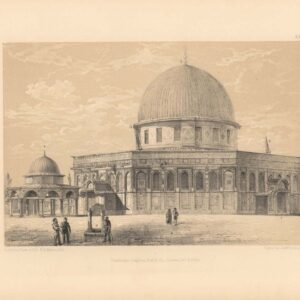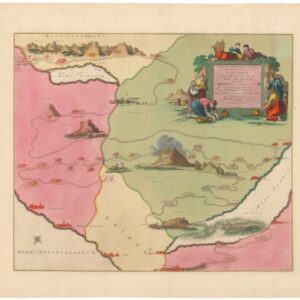Rare locally published 1939 map of Beirut.
Plan de Beyrouth.
$875
1 in stock
Description
A scarce and highly localized cartographic record, this map provides a snapshot of a city in transformation, anticipating the end of the Mandate and the birth of modern Lebanon.
This 1939 map of Beirut, titled Plan de Beyrouth, offers a striking and highly detailed portrait of the city at the close of the French Mandate period. Published locally by the Société d’Éncouragement au Tourisme and printed by Imprimerie Catholique, the map reflects both the colonial administration’s influence and the modernization efforts underway in Lebanon’s capital. Its clean grid overlay and vibrant yellow coloration indicate the dense urban core stretching along the Mediterranean coastline, while the surrounding areas remain largely undeveloped, foreshadowing Beirut’s future postwar expansion. The sea frames the map’s northern edge, emphasizing the city’s long-standing importance as a maritime hub and point of imperial interest.
Drawn with clarity and precision, the map documents Beirut’s infrastructure on the eve of World War II, including a well-developed road network, railway lines, aerodrome, port facilities, and military zones. A detailed index at the lower left identifies over 120 institutions and landmarks—government ministries, churches, mosques, synagogues, markets, hospitals, foreign embassies, and prominent schools—marking Beirut’s layered religious and cultural geography. Central districts such as Rue Gouraud, Sodeco, and the government quarter are clearly labeled, as are peripheral suburbs and outlying villages along the Damascus road. The inclusion of both Christian and Muslim quarters, along with international hotels and consular buildings, attests to Beirut’s cosmopolitan character and its role as a political and commercial gateway between Europe and the Middle East.
The timing of the map’s publication is also significant. In 1939, France was on the verge of entering World War II, and Beirut stood at the crossroads of imperial interests and rising nationalist sentiments. Although nominally under French administration, the city had begun to assert its autonomy in the cultural and political arenas. This map captures Beirut at a pivotal moment—modernizing rapidly yet still under foreign rule, expanding physically while shaped by deep-rooted communal traditions. As such, it stands as both a practical urban plan and a historical artifact of a complex and transitional era in Lebanese history.
Cartographer(s):
Condition Description
Very good. Light wear and toning along fold line.
References

![[Mısır Haritası / Map of Egypt]](https://neatlinemaps.com/wp-content/uploads/2025/06/NL-02391_thumbnail-2-300x300.jpg)

